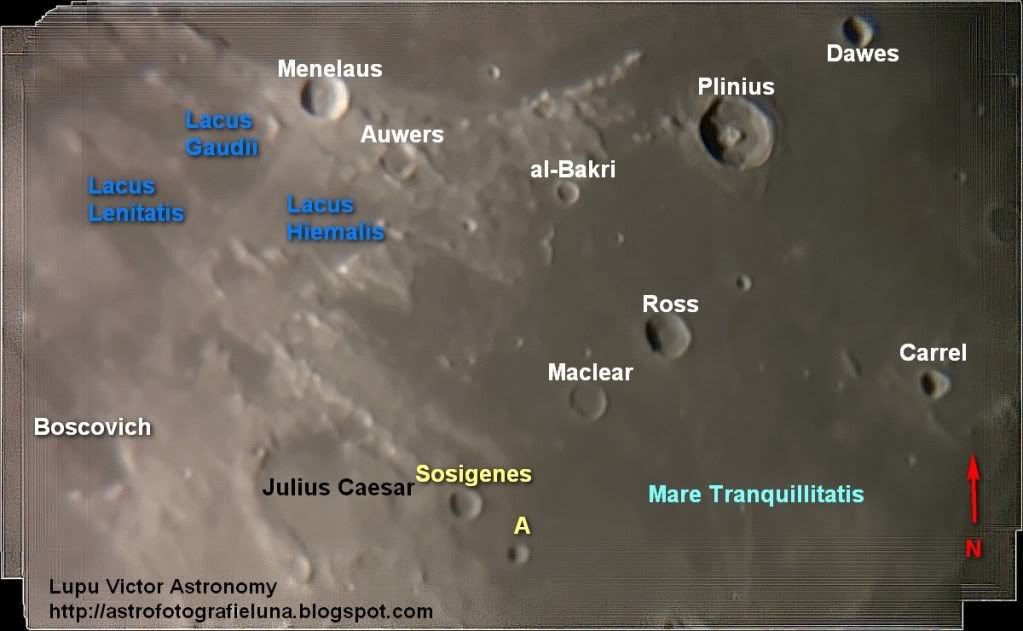Sunday, 19 August 2012
Plinius between two large seas Pictures by astronomical telescope
The Moon is much less geologically active than Earth. Unlike Earth's crust, whose multiple tectonic plates overlaps and collides and gave rise to mountain areas or destroyed bottom seas, the Moon's crust is a rigid single plate. A series of Moon features results from the deformation of the crust, which include compression (shortening) and tension (extension). Tectonic features are well illustrated around Humorum and Serenitatis basins.
The complex crater Plinius with many mountains, changes it's appearance considerably in different lighting conditions. It is located between Mare Serenitatis and Tranquillitatis.
Around Plinius there is is a lighter blanket caused by the impact and irregular hills on the floor to the north.
Notice some arched rilles, including Rima Plinius, north of Plinius and the darker surrounding. Darker areas show lava flows that prior the bright inner sides of Mare Serenitatis lava sinking. Also note Promontorium Archerusia and Dawes crater.
Photographer: Victor Lupu
Optical Reflector Telescope Celestron C8-Newtonian inch, 20mm Plössl, 2x Barlow
Mount: CG5 (EQ5)
Camera: Sony HDR CX105 to 8x optical zoom
Total Magnification: 800x
Filter: No
Date: 20/07/2011
Location: Baia Mare, Romania
Processing: video captures
Photo above was made on 20.07.2011.
IMAGES AND VIDEOS
About me
(8)
Astronomical Phylosophy
(5)
Astronomy Labels
(1)
Astronomy terms
(5)
Craters-Reinhold and Lansberg
(2)
Craters-Santbech
(5)
DSLR Hyperion pictures
(4)
DSLR astronomy pictures
(4)
DSLR telescope pictures
(21)
Occultations
(5)
Rima Ariadaeus
(4)
Rupes Altai
(10)
The colours of the Moon
(7)
Things about the Moon
(9)
Weird sightings
(8)




 Sunday, August 19, 2012
Sunday, August 19, 2012
 Unknown
Unknown







 Posted in:
Posted in: 


0 comments:
Post a Comment